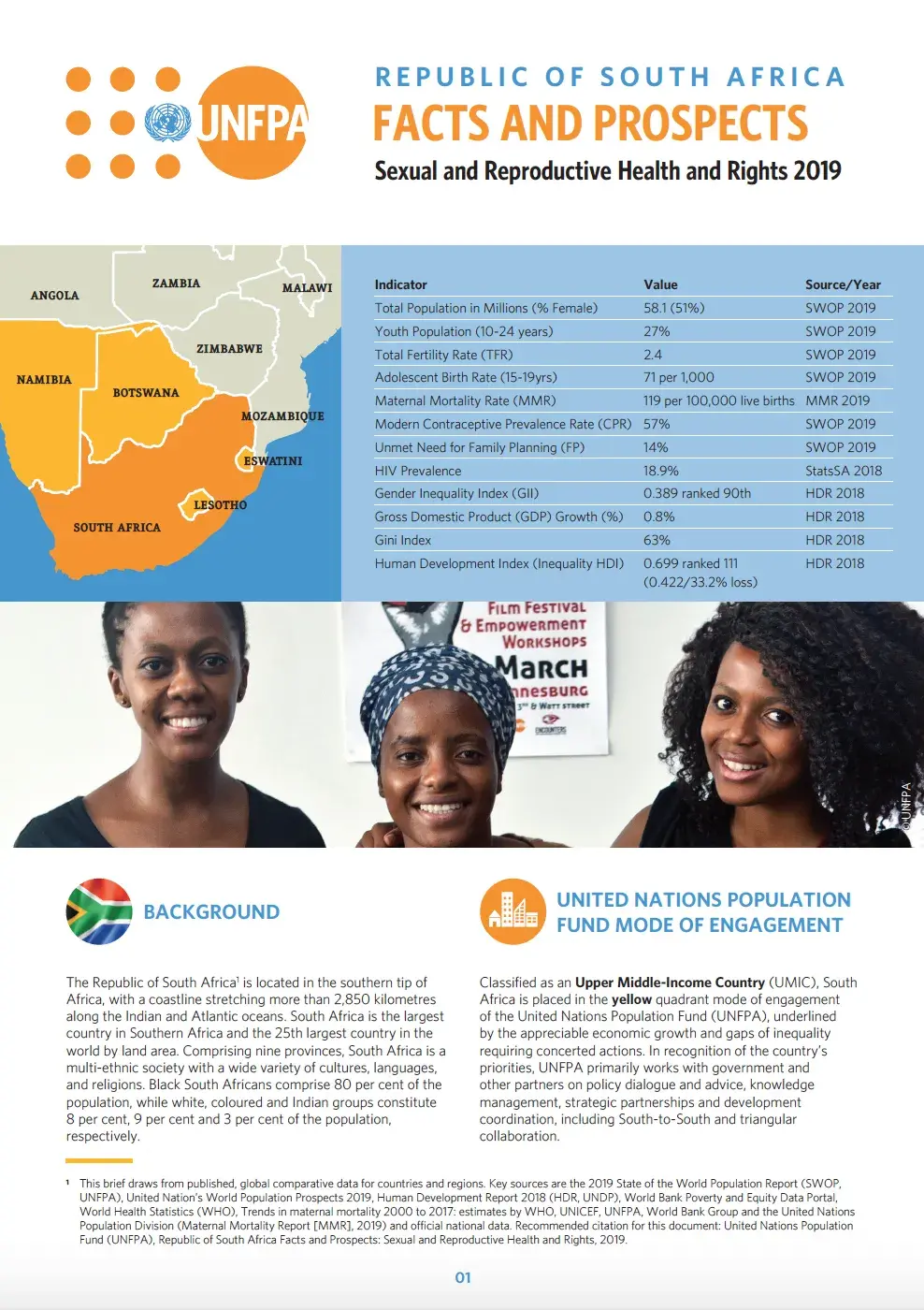Southern African Middle Income Countries’ Profiles Series
Trends of selected population and sexual and reproductive health indicators in Southern African middle income countries
The world’s middle-income countries (MICs) are a diverse group by size, population and income levels. Lower-middle-income countries (LMICs) with a gross national income (GNI) per capita ranging from $1,026 to $3,995 and upper-middle-income countries (UMICs) with a GNI per capita ranging from $3,996 to $12,375 at 2019 levels, often demonstrate the complexity of co-existing wealth, economic prospects and development inequalities.
The African continent has eight UMICs and one high-income country (HIC) – Seychelles. Southern Africa is home to half of the UMICs on the continent.
This series presents a trend analysis of selected indicators related to the International Conference on Population and Development (ICPD) Programme of Action among Southern African UMICs, including a comparison with selected UMICs and HICs from other parts of the world, with a view to identifying opportunities for improvement.
The Republic of South Africa is the largest country in Southern Africa and the 25th largest country in the world by land area. Comprising nine provinces, South Africa is a multi-ethnic society with a wide variety of cultures, languages, and religions. Classified as an Upper Middle-Income Country, South Africa is placed in the yellow quadrant mode of engagement of the United Nations Population Fund (UNFPA), underlined by the appreciable economic growth and gaps of inequality requiring concerted actions.



